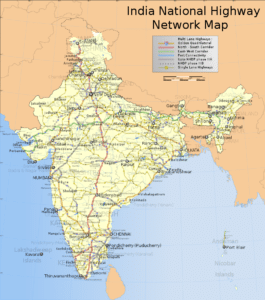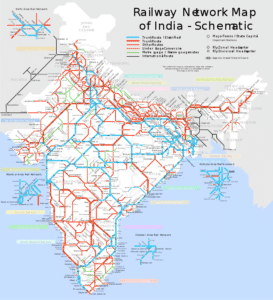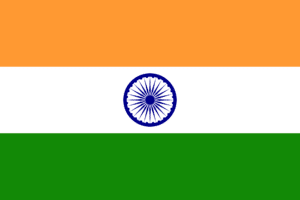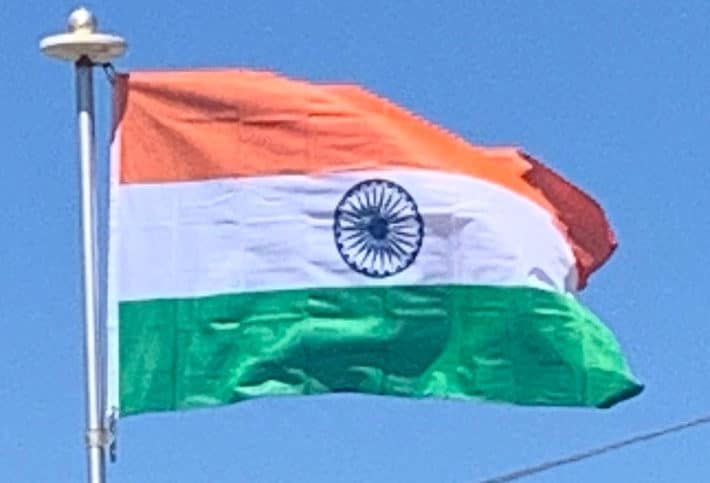
India’s road network is the second-largest and one of the busiest in the world, transporting 8.225 billion passengers and over 980 million tonnes of cargo annually, as of 2015.
India’s rail network is the fourth largest and second busiest in the world, transporting 8.44 billion passengers and 1.23 billion tonnes of freight annually, as of 2019.

Aviation in India, broadly divided into military and civil aviation, is the fastest-growing aviation market in the world (IATA data) and Bangalore with 65% national share is the largest aviation manufacturing hub of India.

India’s waterways network in the form of rivers, canals, backwaters and creeks, is the ninth largest waterway network in the world. Freight transport by waterways is highly under-utilised in India with the total cargo moved (in tonne kilometres) by inland waterways being 0.1 percent of the total inland traffic in India.
Flag of India:
The National Flag of India is a horizontal rectangular tricolour of India saffron, white and India green; with the Ashoka Chakra, a 24-spoke wheel, in navy blue at its center. It was adopted in its present form during a meeting of the Constituent Assembly held on 22 July 1947, and it became the official flag of the Dominion of India on 15 August 1947. The flag was subsequently retained as that of the Republic of India. In India, the term “tricolor” almost always refers to the Indian national flag. The flag is based on the Swaraj flag, a flag of the Indian National Congress designed by Pingali Venkayya.

By law, the flag is to be made of khadi, a special type of hand-spun cloth or silk, made popular by Mahatma Gandhi. The manufacturing process and specifications for the flag are laid out by the Bureau of Indian Standards. The right to manufacture the flag is held by the Khadi Development and Village Industries Commission, who allocates it to regional groups. As of 2009, the Karnataka Khadi Gramodyoga Samyukta Sangha has been the sole manufacturer of the flag.
Gandhi first proposed a flag to the Indian National Congress in 1921. The flag was designed by Pingali Venkayya. In the center was a traditional spinning wheel, symbolizing Gandhi’s goal of making Indians self-reliant by fabricating their own clothing, between a red stripe for Hindus and a green stripe for Muslims. The design was then modified to replace red with saffron and to include a white stripe in the center for other religious communities, and provide a background for the spinning wheel. Subsequently, to avoid sectarian associations with the color scheme, the three bands were assigned new meanings: courage and sacrifice, peace and truth, and faith and chivalry respectively.
A highly detailed history and commentary covering the previous and current flag of India is available elsewhere for those deeply interested in this topic.
